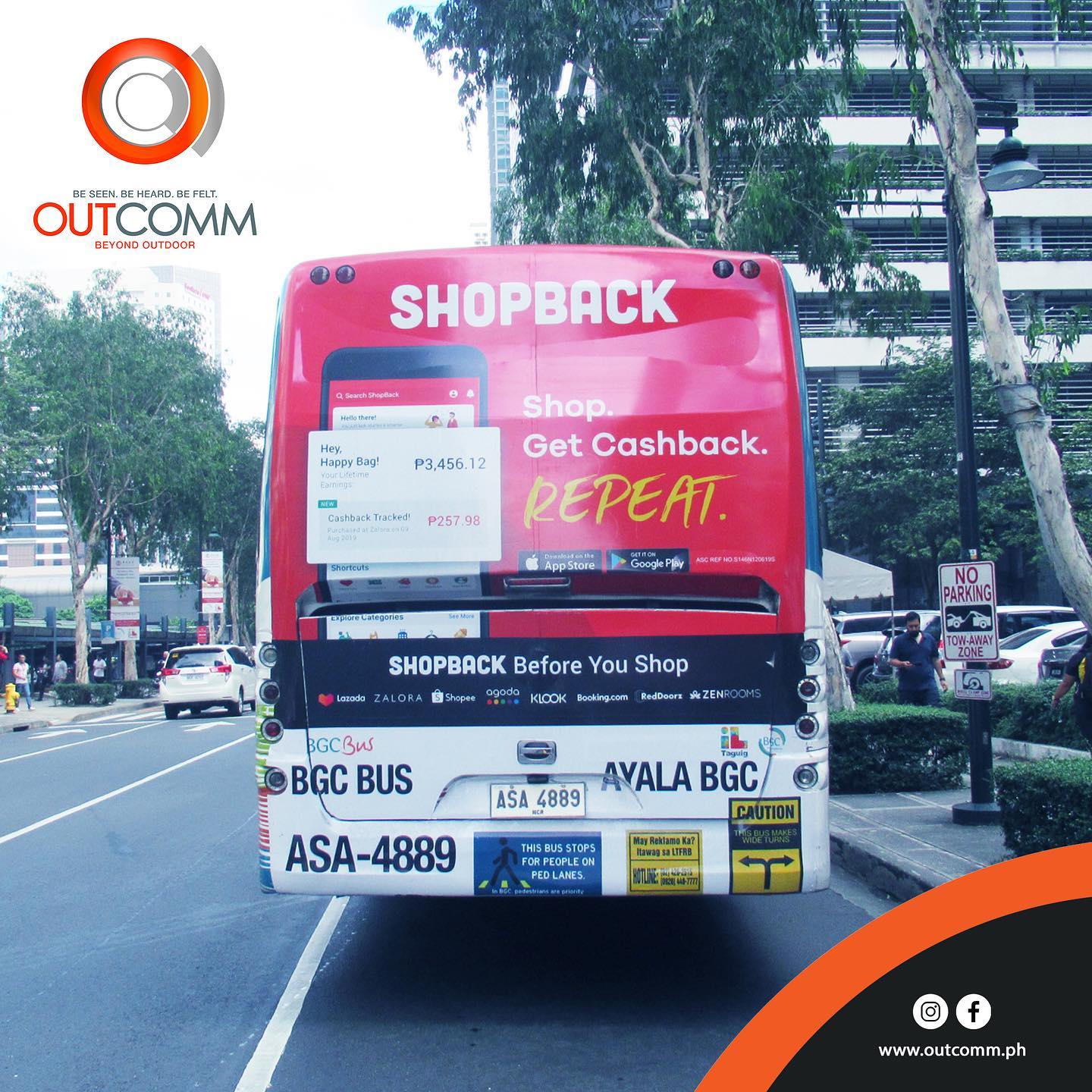Transit Advertising Philippines: An Ingenious Way to Market
Transit Advertising Philippines: An Ingenious Way to Market
Blog Article
Comprehending the Role of Transit Advertising in Enhancing Brand Name Presence and Customer Engagement
Transportation marketing has emerged as a pivotal aspect in the marketing landscape, providing special possibilities for brand names to elevate their presence and involve customers properly. With the capability to reach a diverse and restricted target market during their day-to-day commutes, these advertising methods are not merely concerning visibility; they have to do with producing meaningful links with possible customers. As we discover the complex advantages and innovative techniques within transportation advertising, it becomes vital to take into consideration just how these elements collectively influence customer perception and behavior, raising concerns concerning their long-term effect on brand commitment.
Definition of Transit Advertising And Marketing
Transit advertising and marketing refers to the method of promoting products, services, or brands through advertisements placed in and around public transport systems. This type of advertising and marketing includes a variety of positionings, including posters on buses and trains, electronic screens at transit stations, and covers on the outside of cars. It intends to reach a diverse target market, exploiting on the high foot web traffic related to public transit.
Transit advertising is strategically placed to record the interest of travelers, who commonly invest considerable time waiting or traveling. By integrating ads right into the daily routines of people, brands can create an enduring impression and foster brand name acknowledgment. The tool is especially efficient in metropolitan environments, where public transport is a primary mode of travel.
Furthermore, transportation marketing can help with localized targeting, enabling organizations to reach details demographics based on transit courses and terminal locations. As metropolitan populations grow and making use of public transport increases, this advertising technique has gained prominence as a vital part of incorporated advertising and marketing approaches. The dynamic nature of transit advertising and marketing, integrated with its ability to engage customers in a restricted setting, highlights its importance in modern marketing practices.
Advantages of Transit Advertising
The effectiveness of transportation advertising depends on its ability to provide a multitude of benefits to brands seeking to enhance exposure and engagement. One of the main advantages is the comprehensive reach it offers; transit ads can effectively target diverse demographics throughout city areas, reaching both pedestrians and travelers alike. This broad direct exposure dramatically increases brand name awareness.
Another benefit is the high frequency of perceptions. As transportation vehicles follow established paths and quit at several locations, they develop repeated direct exposure that reinforces brand name messages. This frequency promotes knowledge, which is important in customer decision-making.
Transit advertising and marketing is additionally economical contrasted to various other media systems. Provided its extensive reach and possibility for high perceptions, brand names usually experience a reduced cost per thousand perceptions (CPM), optimizing their marketing budget.
Moreover, transportation ads can create a feeling of area link. By straightening with regional transit systems, brands can resonate with regional audiences and cultivate a feeling of regional pride. This local approach enhances brand loyalty and interaction, making transportation advertising a compelling choice for services aiming to strengthen their visibility in the marketplace.

Efficient Methods for Transit Campaigns
To optimize the impact of transit campaigns, brand names must take advantage of tactical preparation and implementation customized to their target audience. Initially, determining the demographic features of the audience utilizing public transit is crucial. This permits brand names to produce individualized messaging that reverberates with possible clients.
Following, picking the appropriate transit mediums is necessary. Whether making use of bus wraps, train posters, or digital screens, each tool has special advantages that can improve presence. For instance, vibrant visuals on bus covers can draw in focus, while digital advertisements can be updated regularly to mirror prompt promos.
In addition, incorporating a cohesive branding method across transportation systems ensures consistency and strengthens the brand's identity. Making use of appealing layouts and unforgettable taglines will enhance brand name recall amongst travelers.
Lastly, timing is a key consider performing successful transportation projects. Releasing campaigns throughout height traveling hours or regional events can considerably increase exposure and interaction. By utilizing these methods, brand names can successfully harness the possibility of transit advertising and marketing, fostering greater awareness and connection with their target audience. Ultimately, a well-executed transit campaign can drive considerable development in brand visibility and consumer interaction.

Gauging Influence and Engagement
In assessing the effectiveness of transportation ad campaign, exact measurement of influence and involvement is crucial for brand names seeking to enhance their advertising and marketing strategies. Metrics such as reach, regularity, and perceptions provide fundamental data to assess presence. Evaluating these variables helps determine just how numerous possible clients are subjected to the advertisements during their daily commutes.
Involvement can be further determined with customer interactions, such as website traffic, social networks discusses, and straight feedbacks to calls-to-action featured in the advertisements. Using tools like QR codes or special Links can promote monitoring of consumer actions straight connected to transportation projects. Surveys and comments mechanisms also function as valuable techniques to gather qualitative data on consumer assumptions and recall of the advertisement.
Moreover, advanced analytics and attribution versions can associate transit direct exposure with subsequent acquiring actions, offering understandings right into the return on financial investment. By employing a detailed approach that combines qualitative and quantitative measures, brands can create a nuanced understanding of their transit advertising effect. Eventually, this data-driven strategy allows brand names to refine their projects, ensuring they reverberate efficiently with target audiences and improve general brand visibility.
Study of Effective Projects
Effective transportation ad campaign offer as engaging instances of exactly how effective methods can Homepage boost brand name presence and interaction. Transit Advertising Philippines. One remarkable case is the "I Love New york city" project, which changed the city's image and drew in numerous visitors. By using metro ads, billboards, and bus wraps, the campaign created a strong, natural brand name identity, resulting in a substantial uptick in tourist and local service patronage
One more excellent project is Coca-Cola's "Share a Coke" initiative, which leveraged transit marketing to individualize the great site brand experience. By including popular names on marketing materials across different transit systems, Coca-Cola promoted a much deeper emotional link with customers, urging them to share their experiences on social media.
In addition, the "Got Milk?" project effectively utilized public transportation advertisements to get to a broad audience, enhancing the message of the importance of milk in a well balanced diet regimen. The campaign saw a quantifiable increase in milk intake in target demographics.
These study show that when executed attentively, transit advertising and marketing can dramatically enhance brand name visibility, foster customer engagement, and drive measurable results, demonstrating its important role in modern advertising and marketing techniques. - Transit Advertising Philippines
Final Thought
In final thought, transit marketing functions as an essential device for improving brand name presence and cultivating customer involvement. By using tactically put advertisements within public transport systems, brands can efficiently enhance and reach varied target markets acknowledgment with regular exposure. The implementation of targeted messaging and innovative approaches even more amplifies the impact of transit campaigns. Eventually, the capability to determine involvement and evaluate successful study emphasizes the effectiveness of transportation marketing in driving brand name loyalty and customer communications.
Transportation marketing has emerged as a critical aspect in the advertising landscape, supplying special possibilities for brands to boost their exposure and involve consumers effectively.In addition, transportation advertising and marketing can promote local targeting, permitting businesses to reach details demographics based on transportation routes and terminal locations.In reviewing the efficiency of transportation advertising and marketing projects, exact dimension of effect and interaction is crucial for brand names looking for to maximize their marketing strategies.Effective transit marketing projects offer as compelling examples of exactly how effective strategies can raise brand visibility and involvement.In go to this site conclusion, transportation marketing offers as a crucial tool for boosting brand name exposure and fostering consumer interaction.
Report this page